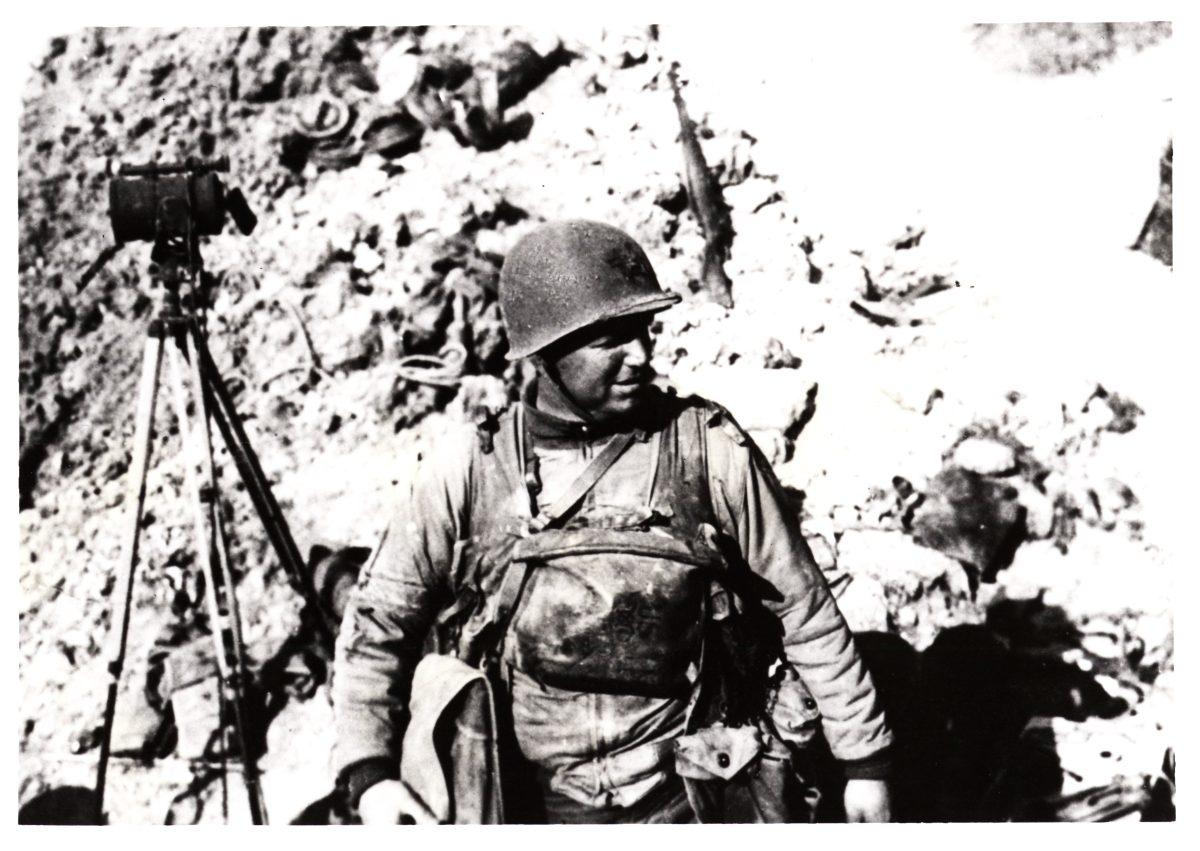Exemplifying selfless service, Texas A&M University alone provided more officers for the armed forces during World War II than all the nation’s other military academies combined. In fact, the state of Texas contributed a larger percentage of men to the armed forces than any other state during the war.
More than 150,000 American, British and Canadian soldiers invaded a 50-mile stretch of the heavily fortified coast of Normandy on June 6, 1944. Among them were renowned Aggies such as 34-year-old Lt. Col. James Earl Rudder, who would become A&M’s 16th president.
Making his mark in the history books, Rudder led a provisional ranger unit up the cliff of Pointe du Hoc on D-Day, 74 years ago. Director and curator at Cushing Library, Anton duPlessis said Rudder Tower’s height memorializes the 100-foot high cliffs that the brave soldiers climbed under Rudder’s command.
“There were so many Ags that were in leadership roles that essentially, they probably helped guide battle — we had officers for instance that were in the highest level of decision making,” duPlessis said. “A&M has long been an institution to provide a lot of officers in particular to the military.”
Rudder and his men were assigned to take out the Germans’ howitzer cannons on the cliff over the beaches of Normandy. Germans considered the cliffs unscalable, however American forces considered it an accessible assault point and reasoned that with a well-trained force, soldiers could land on the narrow beaches below at low tide and ascend the cliffs with the assistance of ropes and ladders.
“Ags were all over the place and essentially by being there, having their experience and the sort of education they did, they helped make the United States Military more effective,” duPlessis said.
After landing nearly 40 minutes behind schedule at 7:10 a.m., Rudder led the 250 men of Task Force A under German fire to take out enemy cannons on the cliffs. The mission proved vital to the outcome of the landing of Operation Overlord in Normandy and consequently the entire allied invasion. American academic lecturer, Thomas Hatfield wrote about the occurances of June 6, 1944 in his book “Rudder, From Leader to Legend,” the first comprehensive biography of James Earl Rudder.
“The allied landing, principally of the Americans, British and Canadians in Normandy on June 6, 1944, was, I think, the main effort by the western allies to defeat Nazi Germany,” Hatfield said. “[The invasion] was important because it clearly established the United States as a preemptive world power.”
The Rangers experienced much difficulty climbing up the cliffs that day. Using steel ladders and rocket-propelled grapnel hooks with ropes attached, Rudder’s first Rangers scaled the cliffs within ten minutes. Lisa Kalmus is a curator at the Sanders Corps of Cadets Center museum, where she helps share the history of the Corps of Cadets from its beginning in 1876 to today.
“History is made up of extraordinary people who rose up to do extraordinary things and I think A&M was a place that really prepared them for that,” Kalmus said. “We look back now on what they did and how they served and we’re just like ‘wow! How could someone do that,’ but they were normal students.”
By June 8, Rudder’s Rangers had suffered a 70 percent casualty rate. Of the 2nd Ranger Battalion, 77 were killed and 152 soldiers were wounded.
“They’re not called the great generation for nothing,” Kalmus said. “They knew what they were getting into … more then than today — and they went anyway.”
The success of Rudder’s mission allowed for the success of the D-Day invasion. To honor the brave men, a monument to the 2nd Ranger Battalion sits atop a cliff about eight miles west of the Normandy American Cemetery and Memorial.
“These ideals that we hear about [at A&M] were actually put into practice by these guys,” duPlessis said. “This idea of service and of sacrifice and putting others ahead — valor — it’s there and these guys kind of exemplified it.”
From Aggieland to Normandy
May 29, 2018
Photo by Provided by Cushing Library
Lieutenant Colonel James Earl Rudder was one of the 20,229 Aggies who served in World War II, leading the men of Task Force A over the cliffs of Pointe du Hoc.
Donate to The Battalion
Your donation will support the student journalists of Texas A&M University - College Station. Your contribution will allow us to purchase equipment and cover our annual website hosting costs.




















